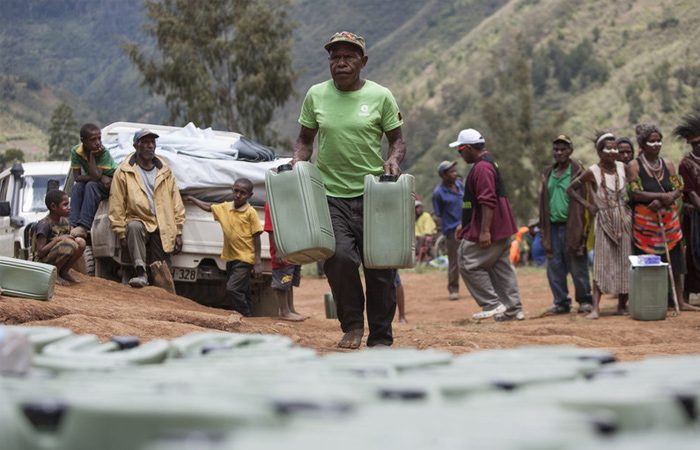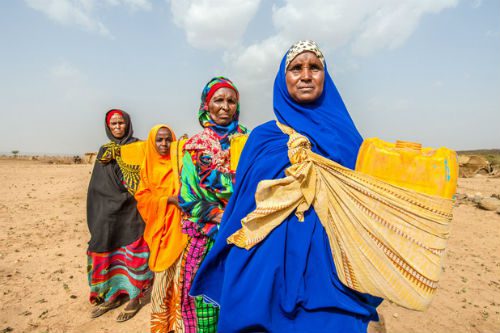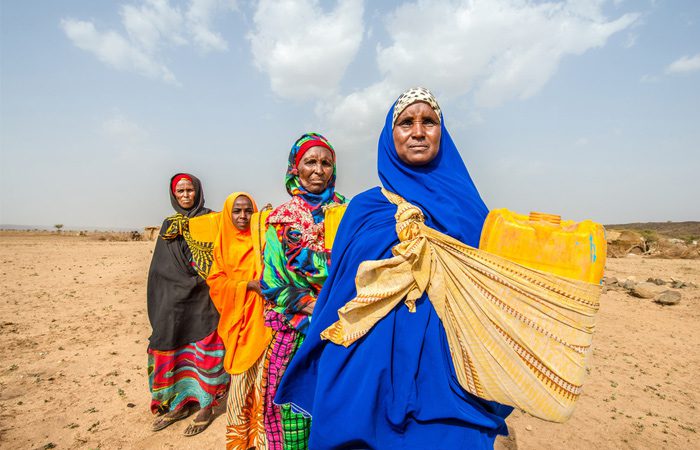El Niño Food Crisis
In late 2015 and through 2016, 60 million people around the world face hunger as a result of the strongest El Niño ever recorded – the climate phenomenon that develops in the tropical Pacific and brings extreme weather to several regions of the world. The 2015/2016 “super El Niño”, combined with climate change, brought severe droughts, erratic rains and flooding to parts of Africa, the Pacific, Asia, the Caribbean and Central and South America.
- In Papua New Guinea, drought and frost are affected up to 3 million people, destroying crops and livestock. The effects on the landscape were clearly visible and the communities, who previously relied heavily on agriculture and farming, suffered from severe food shortages. Creeks and streams dried up, forcing villagers to use alternative sources of water and compromising hygiene practices which can increase cases of water-borne disease.
- In Ethiopia, emergency food and other humanitarian aid were needed for 9.7 million drought affected people.
- In Zimbabwe, an estimated 4.1 million people required humanitarian aid due to a long, hard, lean season ahead of harvests.
- In Malawi, 6.5 million people, more than half the rural population, needed assistance.
- In Guatemala and Honduras, which were hit by drought two years running, hundreds of thousands of farmers suffered the partial or total loss of their crops through drought and changes to the seasons.
The onset of a powerful El Niño compounded the pressures that many communities already face from climate change, including shifting rainfall patterns and more extreme weather. Worryingly, recent research suggests that these particularly strong El Niño events may occur twice as often as in the past. The countries most affected by the combined impacts of climate change and El Nino are often the least equipped to adapt.
What we’re seeing right now around the world is also a sobering reminder of the critical need for increased long-term support to vulnerable countries to adapt to the impacts of growing climate disruption. Prevention is better than cure.

What Oxfam is doing to mitigate the impacts of El Niño
- In Papua New Guinea (PNG), with the help of the Australian Government, we supported communities remain resilient to drought through our water, sanitation, hygiene, and livelihoods assistance, as well as an emphasis on awareness raising and public health messaging to support good hygiene practices.
- In Ethiopia, we worked in areas most affected by food shortages to assist communities facing plummeting livestock prices and poor harvests. This included a cash-for-work program, the distribution of animal feed and livestock vaccinations and the supply of water through water trucking and repair of boreholes, and public health promotion.
- In Somalia, we helped to restore community water sources, provided training around the management of water and reducing the impact of floods, and supported people to access nutrition and health services.
- In Malawi, Oxfam worked with other NGOs to provide cash transfers to people in the districts most affected by food shortages. We also increased activities such as public messaging about nutrition to prepare people for worsening conditions, within our existing long term development projects.
- In Latin America, Oxfam helped to build the resilience of communities in Guatemala, Honduras, Nicaragua, El Salvador and Colombia to ongoing droughts, through cash transfers, training in soil and water conservation, assistance to farmers to diversify their crops and hygiene promotion to reduce risks of malnutrition.
The ultimate humanitarian impacts of a changing climate are still felt around the world. Please donate to the International Crisis Fund today so we can continue to respond to vulnerable communities affected by extreme weather patterns.

Donate to the International Crisis Fund
Help assist those most in need when a natural or a man-made emergency occurs around the globe.
